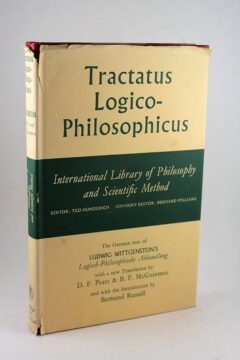A.W. Moore at the LRB:
 Ludwig Wittgenstein’s Tractatus Logico-Philosophicus, the only book he published during his lifetime, is one of the greatest philosophical works of the 20th century. It might have been expected, when it first appeared in 1921, to have limited appeal. It is very much the work of a philosophers’ philosopher, forbiddingly technical in places and esoteric throughout. Yet it has gone on to capture the public imagination as few other philosophical classics have.
Ludwig Wittgenstein’s Tractatus Logico-Philosophicus, the only book he published during his lifetime, is one of the greatest philosophical works of the 20th century. It might have been expected, when it first appeared in 1921, to have limited appeal. It is very much the work of a philosophers’ philosopher, forbiddingly technical in places and esoteric throughout. Yet it has gone on to capture the public imagination as few other philosophical classics have.
It consists of 525 sections, or ‘propositions’, ranging in length from four words to about a page and a half of text and diagrams. Each is given a decimal number, with the numbers indicating subordination and interconnection. Thus propositions 2.21 and 2.22 are comments on proposition 2.2, which is itself a comment on proposition 2, which is one of the seven top-level propositions. The propositions have an aphoristic quality. They are written with great compression, hardly any examples, and little explicit argument. They are for the most part general and abstract. Wittgenstein makes few concessions to his reader. But there is something undeniably awe-inspiring about their cumulative effect and about the concision with which they encapsulate his elaborate system of thought.
more here.
Enjoying the content on 3QD? Help keep us going by donating now.
